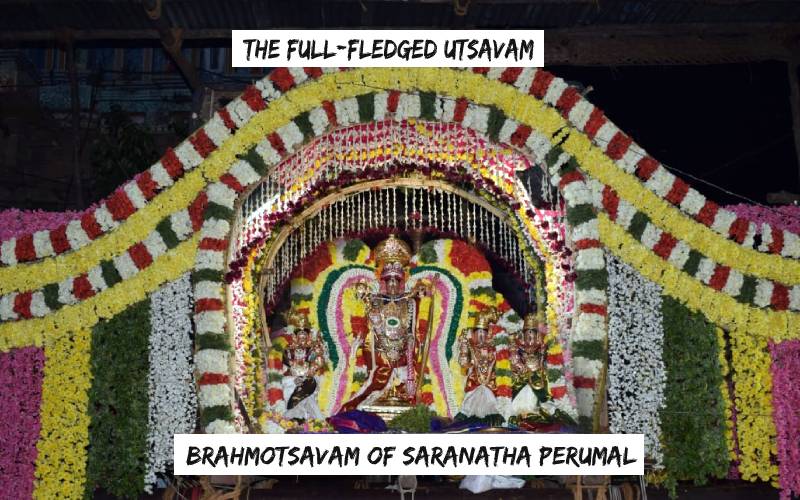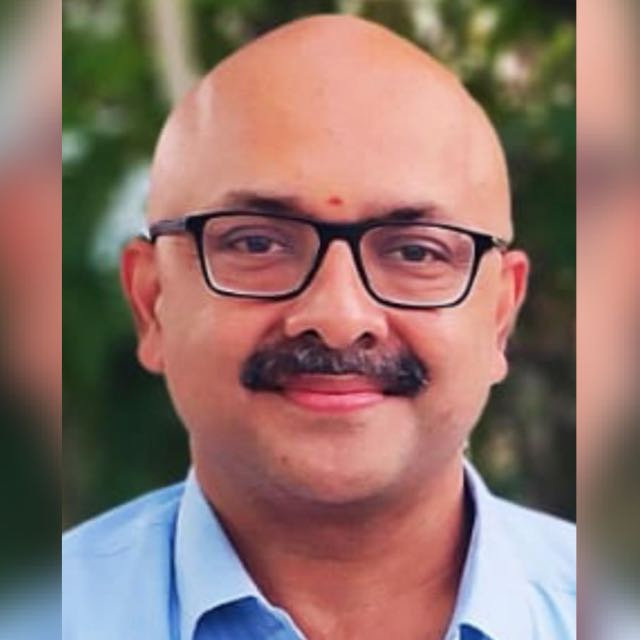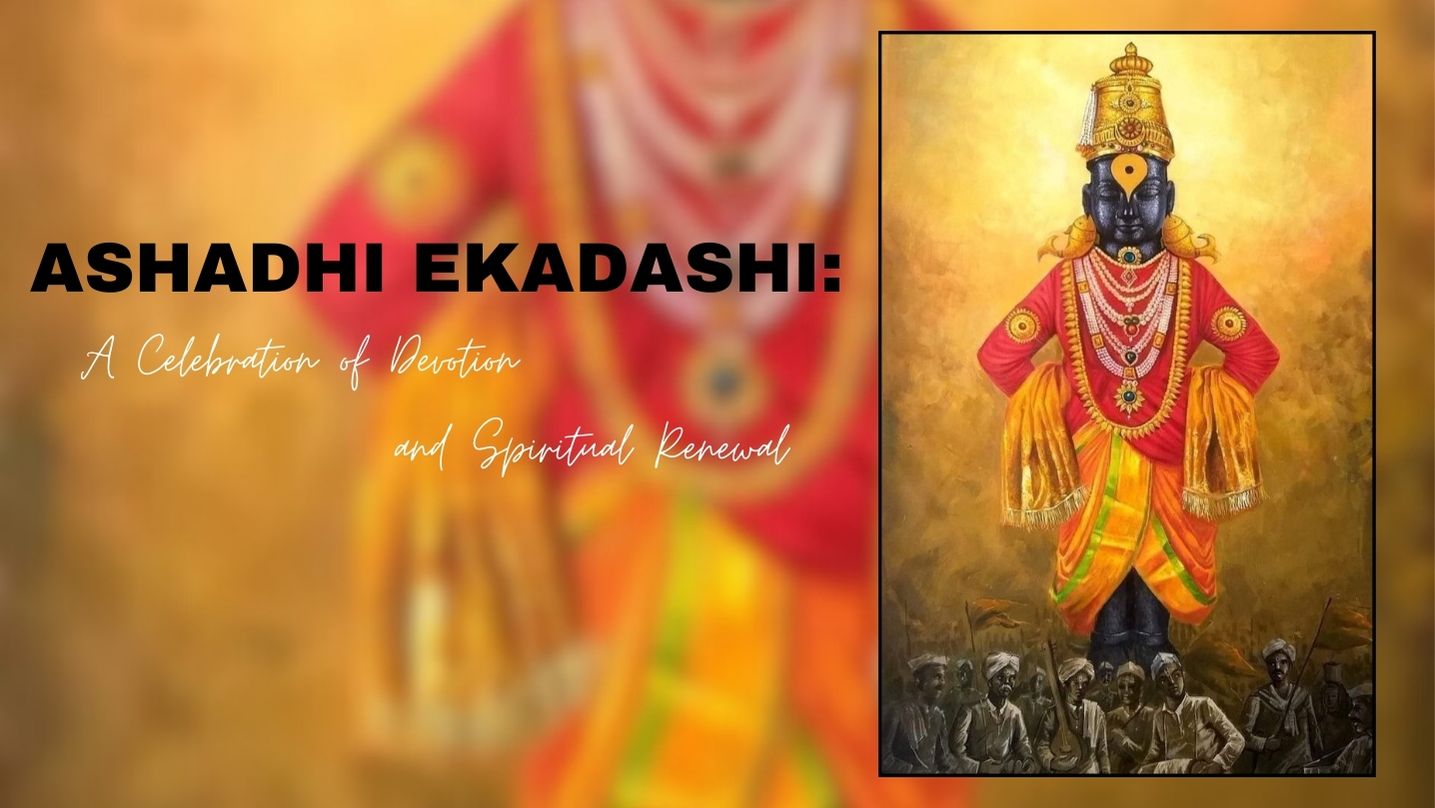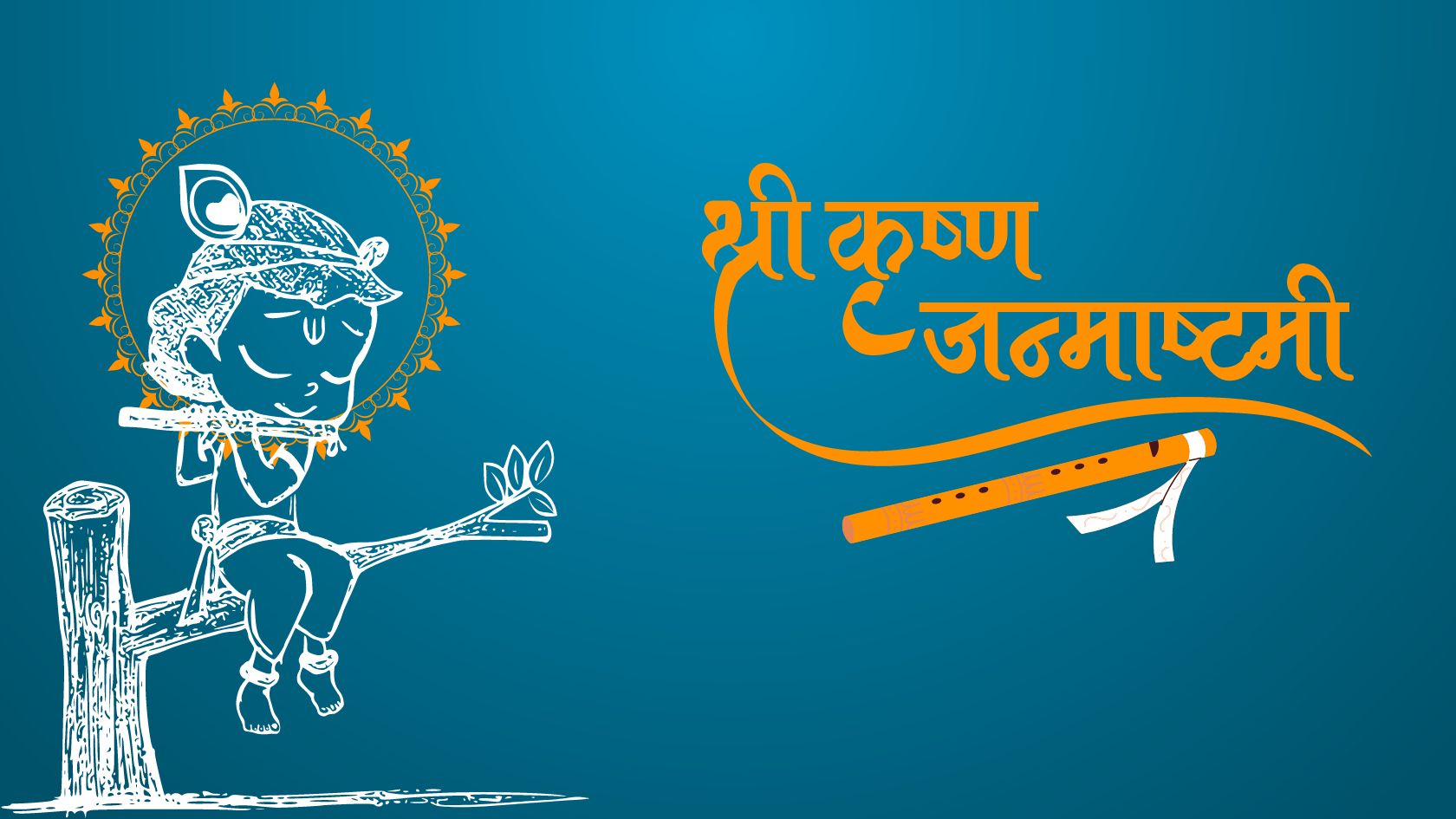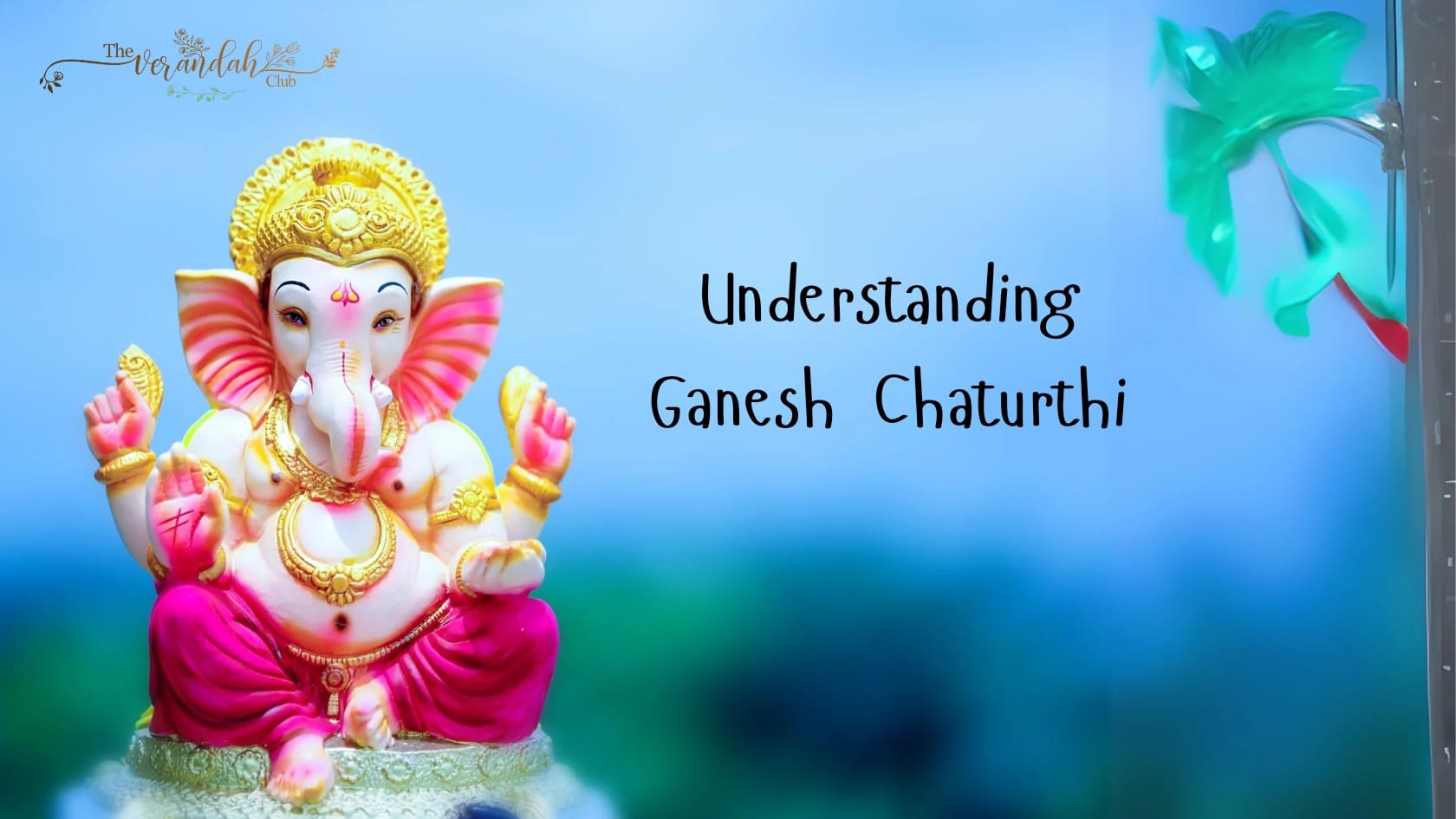Brahmotsavam of the First Perumal on Earth
The river Kaveri was declared as the greatest river by Lord Vishnu at Thirucherai near Kumbakonam in Tamil Nadu. Kaveri has a separate shrine in this ancient temple and Lord Vishnu as Saaranaatha plays on the lap of this lucky river personified. It is believed that Lord Saaranatha was the first to settle down in Bhoomi (Earth) after creation at his own behest.
While Kaveri continues to pray to Him during the age of Kali, Brahma offered his prayers at the Thirucherai temple during the Krita yuga. Lord Rudra performed the aaradhana to Lord Saranatha during the Treta yuga and Vishnu’s mount Garuda (Eagle) had prayed here during the Dwapara yuga. Thirumangai Aazhwaar had also sung in front of the deity here. Thirucherai is the twelfth of the divya desam-s as per the Ramanuja sampradaya.
Lord Saaranaatha’s star happens to be poosam (During the Tamil month of Thai). Therefore, the annual brahmotsavam is celebrated during the same month (Thai – January 15 to February 15). This is the only divya desam wherein the lord holds the lotus in the bud form. He is found as described in the verse, “Vanamali Gadhi...” in the ‘Vishnu Sahasranaamam.’ The temple has Utsavam-s (Festivals) round the year. The Thirukalyanam (Mariage of the deities) takes place during the sixth day of the brahmotsavam.
Let us look at the list from the first Tamil month
| S. No. | Name of the Tamil Month | Name of the festival
|
| 1 | Chitra | Rama Navami |
| 2 | Vaikasi | Vasantha Utsavam |
| 3 | Aani | Kalhaara Utsavam |
| 4 | Aadi | Jyeshta Abhishekam |
| 5 | Avani | Pavithra Utsavam |
| 6 | Puratasi | Shravana Sthiravaasa Utsavam |
| 7 | Aipasi | Manavala Maa Muni Utsavam |
| 8 | Karthigai | Thiru Karthigai and Parakala Utsavam |
| 9 | Maargazhi | Pagal patthu and Raa Patthu Utsavam (20 days)
|
| 10 | Thai | Brahmotsavam (10 days) |
| 11 | Maasi
| Mahotsavam |
12
| Panguni | Panguni Uthra Serthi Utsavam
|
Now, let us enjoy the brahmotsavam as per the narration of the young priest Venkatesa Bhattachar, “The first day begins with the Kodi yetram (Flag hoisting) and the lord moves in a procession on the Indra vimanam along with his three consorts, Sri Devi, Bhoomi Devi and Neela Devi. He moves around in a Pallaaku (Palanquin) during the forenoon of the second day and Suryaprabhavahana in the evening hours. We must remember that the lord goes around in a palanquin for most of the days.”
“Lord Saranatha goes in a procession in the Garuda vahana (Eagle as vehicle) on the fourth day and in the Hanumantha vahana (Lord Hanuman as vehicle) on the fifth day. The thirukalyana utsavam takes place on the sixth day and He proceeds on the Yanai vahana (Elephant as vehicle) during the evening hours. The devotees can witness Perumal on the Thangapadi chattam (Golden deity-seater-frame) on the morning of the seventh day. His consort Bhoomi Devi accompanies Him during the morning hours of the sixth and the seventh day. We can witness Him on the chariot along with Sri Devi, Bhoomi Devi and Neela Devi during the evening hours of the seventh day.”
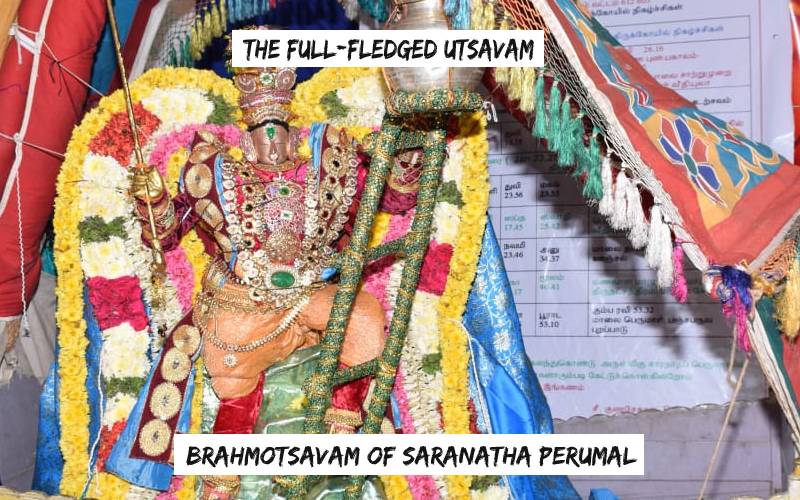
“The Vennai thaali alankaram (Butter adorning) on Krishna is donned on the eighth day morning and he goes on a procession on the Kudhirai vahana (Horse as vehicle) in the same evening. The ninth day happens to be the day of the car festival and a consortium of deities would be present in the chariot which is called as thiruther in Tamil. Saranatha Perumal, Sri Devi, Bhoomi Devi, Neela Devi, Vakshasthala Mahalakshmi, and Maa Madhalai Piran (The Lord who plays on the lap of Kaveri) will be present in the huge temple car by 5 am and bestow their blessings until 9 am at the same spot. Thereafter, the temple car will transport the deities in a procession through the four streets of the village. The procession will return only by 5 pm. A Theerthavaari (A holy bath) would take place at the Sarapushkarani (Temple tank) that very night.”
“The tenth day will witness a grand finale. The custom includes the dwadasha aaradhana and pushpa yaagam. Thirumaal (Vishnu) does the Saptha prakaara purappaadu (Seven-circle procession). He goes around the thiruvannaazhi in first round of the procession. Thereafter, he goes round the shrine of his consort and his own in the second round. The Yaagashaala (The place where Yaaga-s take place) and the aazhwaar shrines are covered in the third round.”
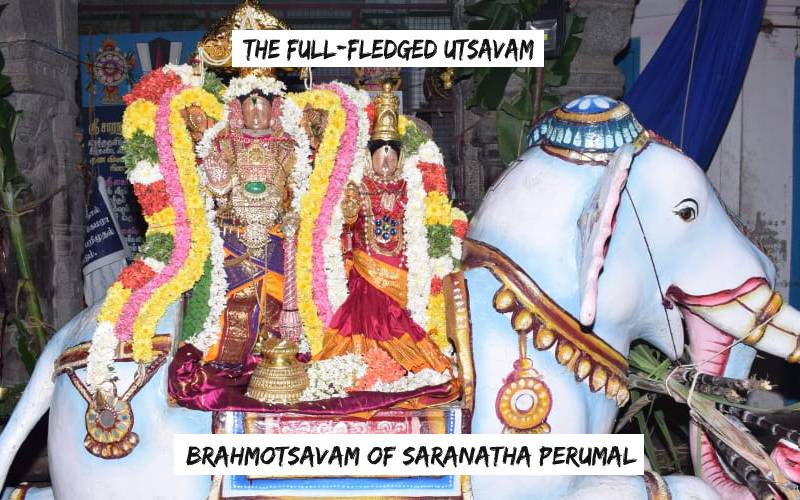
“The fourth round is around the big praakaaram and the Muslim invasion of the past had destroyed some edifices. Lord Saranatha Perumal goes around the ramparts of the temple. The sixth or the penultimate circle will include the sarapushkarani and the temple praakaaram. The seventh procession will be on the street where He would have travelled for the first nine days. This is the seventh praakaraam and with this the saptha praakaara purappaadu is completed. On his return the Kodi irakkam (Dip down of the flag) takes place and the brahmotsavam is completed successfully.”
“Thousands of people participate in the brahmotsavam of this temple and most of the Chola country divya desam-s follow the same procedure. A total of 35 Bhattachariar-s (Priests) participate in the festivities, and this includes 16 youngsters. Divya Prabandha Parayanam (Recitation of the text Divya Prabandha in chorus) and Veda Parayanam (Recitation of Vedas in chorus) take place on all those days.”
“Floral decorations, costuming, adorning the deities with jewelry, cooking and distributing food, cleaning up the temple premises during the 10 days would require a lot of efforts and energy. The temple priests abstain and stay away from family life throughout the ten-day period. The afternoon dhadhi aaradhana is addressed to the priests and other temple staffs.”
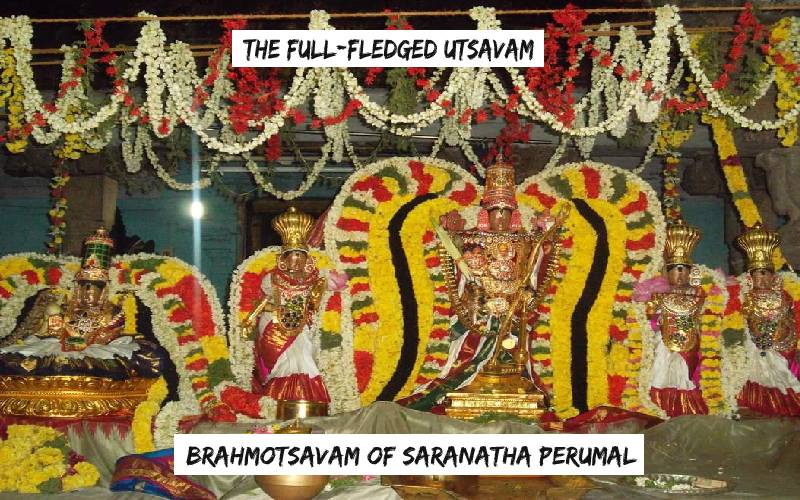
“This thengalai sampradayam temple offers twelve types of Naivedyam (Offerings made to serve the lord) on the tenth day during the brahmotsavam. This includes six bakshanam-s – laddu, murukku, appam, vadai, badusha, mundri cake or badam cake, and six varieties of rice which includes Sarkarai pongal (Sweet pongal), Karuveppilai saadham (Curry leaf rice), Ellu saadham (Sesame rice), Puliyodharai (Tamarind rice), Vennpongal (Salted pongal), and Thayir saadham (Curd rice). The Thaligai (Naivedyam/Prasadam/offerings) would consist of kadhambam, puliyodharai, thayir saadham, sarkarai pongal, thaenga saadham and elumicchai saadham on the other days.”
“Lord Saranatha Perumal has five consorts (Sri Devi, Bhoo Devi, Neela Devi, Vakshasthala Mahalakshmi and Saaranaayaki) in this temple and Saaranayaki has a separate shrine. Devotees are blessed with good progeny by Lord Maa Madhalai Piran for he is found playing on the lap of Kaveri.”
The thirty-two-year-old Venkatesa Bhattachaar spoke at length about his own training, “I studied aagamam for nearly fourteen years (2005 –2019) at Theralundhur under my Guru Kannan Bhattachaar. He was serving Aamaruvi Appan (Lord Vishnu), and his house was my gurukulam. I learnt the pooja methods and aagamam by serving at the Aamaruvi Appan shrine. All of us would stay with our guru and would come home only once or twice a month. It was due to my experience that I could pick up some English, Sanskrit, Hindi, and Tamil.” This young priest from the small temple village is very calm, matured, and knowledgeable. He calls himself a small drop and states that there are many wiser and intelligent people in his village.
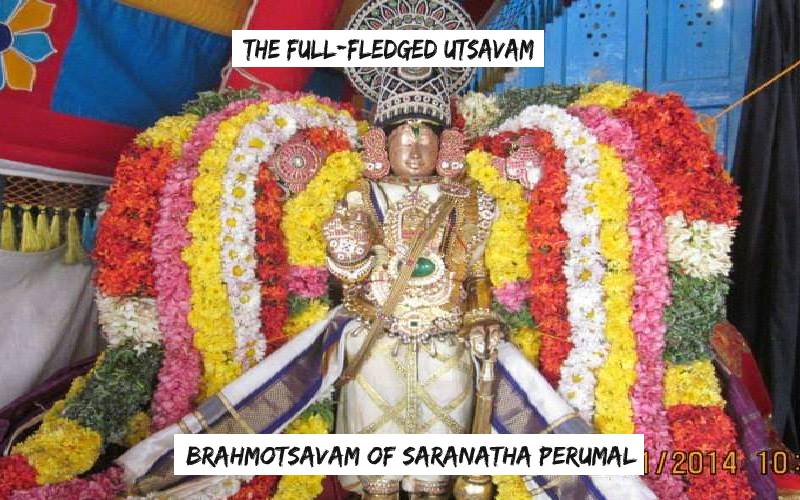
Venkatesha Battachaar elucidated further, “Women are greater than men as per our scriptures. We must love women as much as we love the earth. The earth takes the seeds and gives us plants. Similarly, women help in procreation. Therefore, they are thousand times more important than men.”
“Let me share with you more of my learning. My mentor told me that the human beings are keen to get out of bad karma. Lord Vishnu has stated that whenever a learned Brahmin is satisfied with a meal that is offered to him, bad karma-s go away. The brahmabhoj was done those days for the Brahmin eats in order to extinguish the sins of others. He cannot do any pooja or prayer to himself ever. The life of a learned Brahmin does not belong to himself. His education, lifestyle, eating and prayers are fully for the well-being of the society. This must be remembered and realized at all times.”
An interaction with Venkatesha Bhattachaar of the Saranatha Perumal temple at Thiruccherai is sure to help a person with the knowledge connected to temple rituals, customs, the benefits that are accrued on observance of the same, and the role of the Brahmin in the society.
Mr. Rajesh Govindarajulu is one of the founding members of the Verandah Club Pvt. Ltd. He is a leading columnist, historian, jeweler, entrepreneur, and a heritage enthusiast who is earnestly working to revive the past in the light of the present. Experiential learning about the history of Coimbatore is his main course of interest and he is also a panel member of many colleges in the city.
